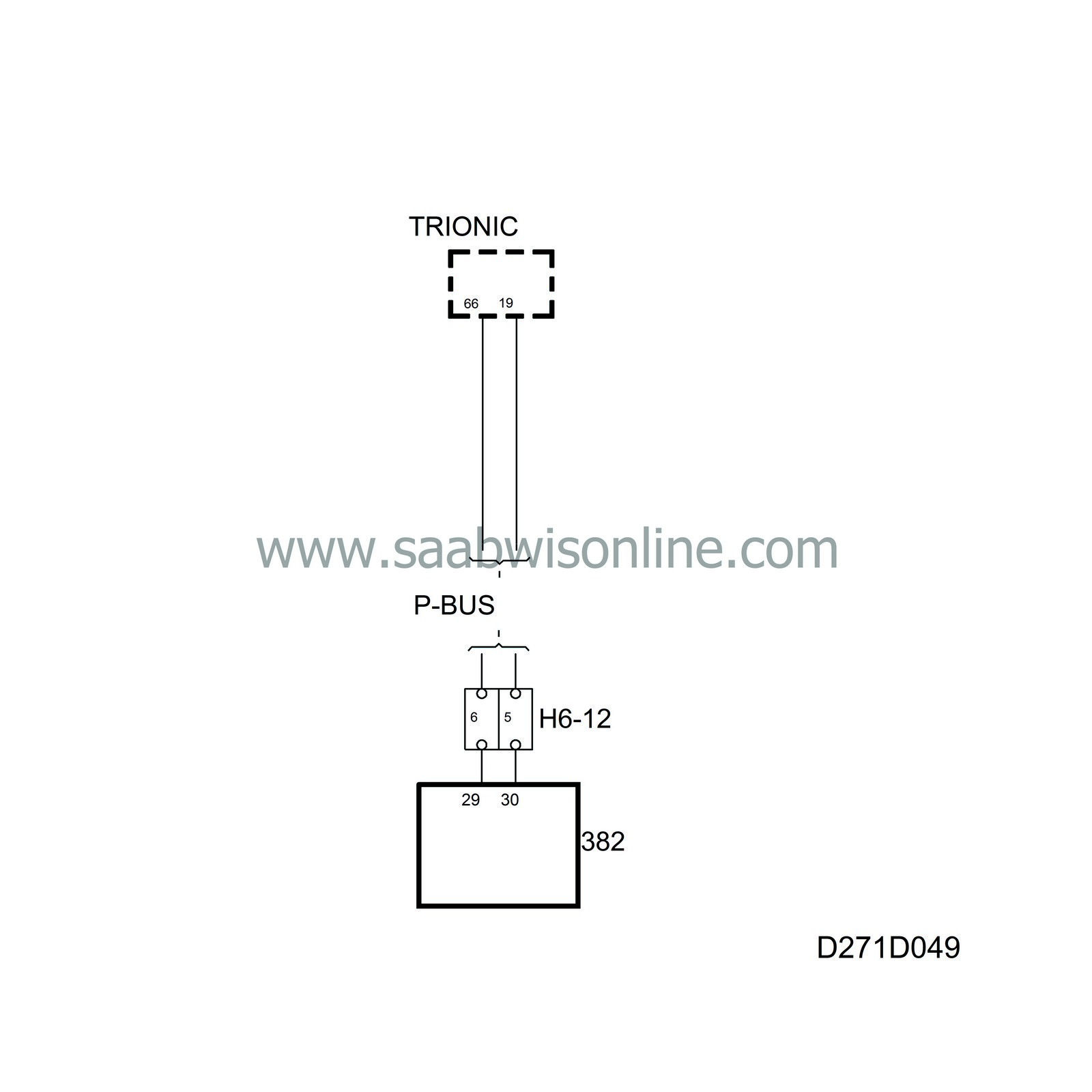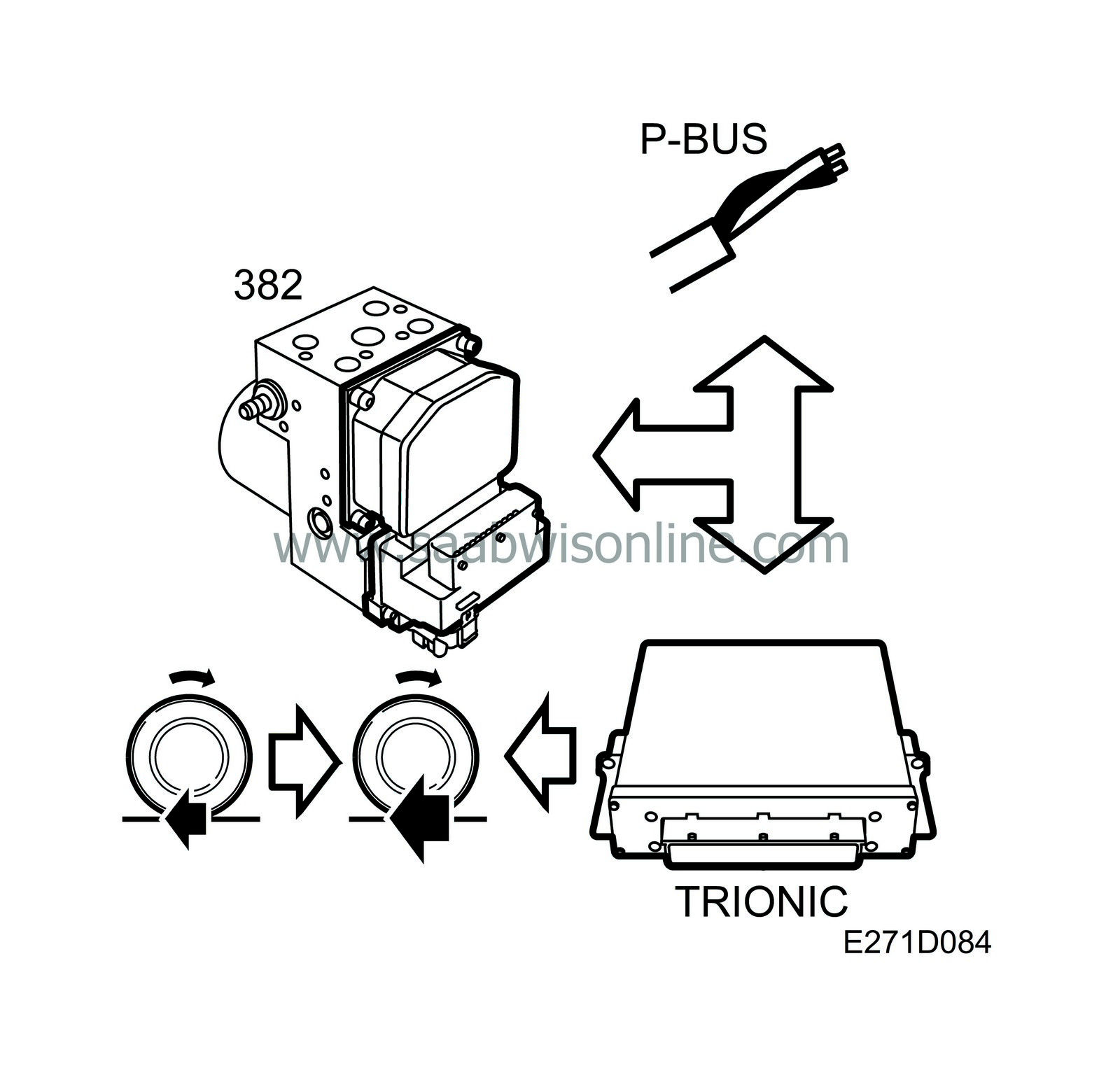Request for engine torque
| Request for engine torque |

Engine torque can vary between -100 Nm and +400 Nm. Negative values indicate engine braking.
The TC/ABS control module sends information to Trionic with a request for torque. This information is sent via the P-bus. The request can vary between +10 Nm and +400 Nm. When TC modulation is not active, the request will be 400 Nm. Information is used in Trionic, together with other information, to supply the correct torque to the driving wheels. See also the description of Trionic.
| Torque request for wheelspin |
If one of the driving wheels exceeds the permitted wheelspin limit, the TC/ABS control module will request a lower engine torque from the Trionic control module. Trionic governs principally the throttle in the throttle body in order to reduce the torque rapidly. After this, the boost pressure may be reduced if necessary.
| Torque request for engine braking |
During engine braking, it is possible that the speed of the front wheels will become lower than the rear wheels. If the speed of the car exceeds 25 km/h and the engine torque is below -50 Nm, the TC/ABS control module will request increased engine torque to maintain directional stability.
There are two alternatives for a request for increased torque
| • |
If the front wheel speed is between 2 and 5 km lower than the rear wheel speed, the TC/ABS control module will request an engine torque of -10 Nm.
|
|
| • |
If the front wheel speed is more than 5 km lower than the rear wheel speed, the TC/ABS control module will request an engine torque of +10 Nm.
|
|
A higher torque will not be requested at vehicle speeds below 25 km/h.



